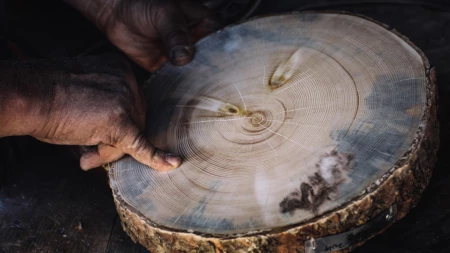What the Trees Know: Solving the Mystery of Colorado’s Record Avalanche Season
In 2019, after a record Colorado avalanche season bulldozed millions of trees, a team of avalanche experts rallied to collect as much information as possible from these 300-year-old keepers of time.
Long after Colorado’s 2019 avalanche season was over and the snow had melted, the wreckage it caused remained strewn across the state. In the first two weeks of March, more than 1,000 avalanches thundered down mountain slopes, 87 of which were classified as D4 or larger (compared to 24 in that size range from the previous eight Colorado winters combined). In snow science, a D4 refers to an avalanche that carries enough force to destroy a railway car, several buildings or a substantial amount of forest. Roads, bridges, historic structures–even the sheriff of Hinsdale County’s home–were demolished. In addition, millions of trees were felled, some of which had stood more than 300 years.
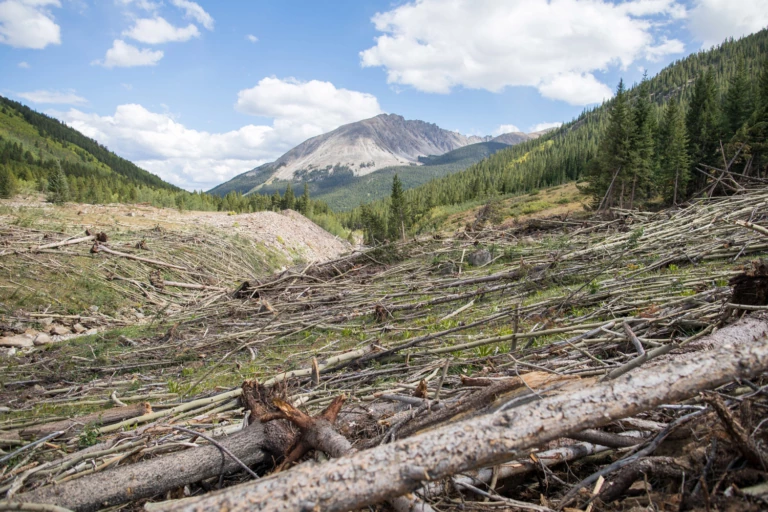
Del desastre a los datos: una vez que la nieve se derritió en las tierras altas de Colorado, los expertos en avalanchas encontraron una muestra con una envergadura sin precedentes para ayudarlos a comprender mejor los patrones de avalanchas y cambio climático. Drenaje de Lake Creek, Colorado. Foto: Forest Woodward
“This avalanche cycle was to snow scientists as an asteroid hitting Earth would be for astrophysicists,” says Dr. Kelly Elder, a research hydrologist at the US Forest Service (USFS) and an avalanche science instructor at Colorado Mountain College. “Scientists can go whole careers or even lifetimes without seeing these rare events.”
Though the avalanche season was catastrophic, claiming three lives and incurring many millions of dollars in damage to public and private infrastructure, Elder and his colleagues are finding the silver lining in the debris that nature deposited in their backyard. The unprecedented onslaught of snow has provided new information that will help researchers better understand the future of avalanches in a changing climate.
Elder understands the poetics of science–how studying minutiae can more clearly inform larger landscapes and how looking at the past can help reveal the future. Placing these avalanches in historical context is key to unraveling their mysteries, but systematic avalanche monitoring in the United States only began in the 1950s; more data were needed. So Elder and his collaborators looked to some of the best record-keepers on the planet–trees.
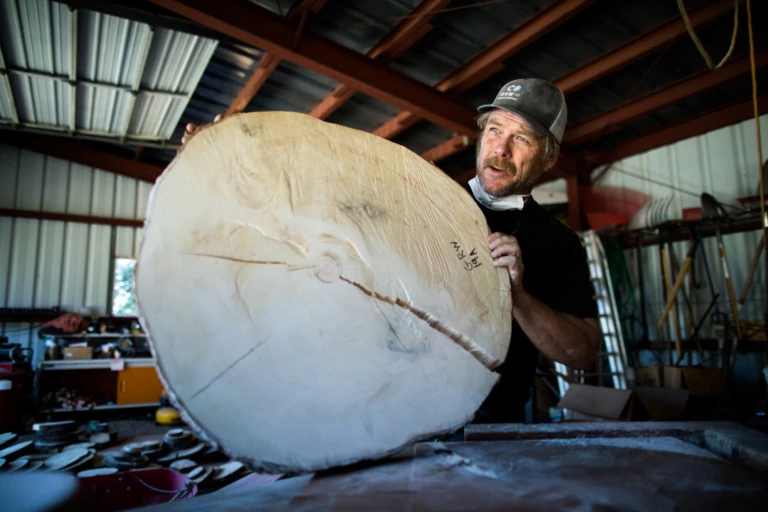
El Dr. Kelly Elder examina un disco recién cortado. Foto: Forest Woodward
Downed trees offer a more accessible narrative than a living forest. For dendrochronologists, a core sample from a live tree is like reading a chapter in the tree’s life, while the ability to look at an entire cross-section is like reading the whole book. After being slammed by an avalanche, if a tree isn’t destroyed, it will attempt to heal and stabilize itself. To continue to grow upright, the tree will form scar tissue called “reaction wood,” which appears in a different pattern or color of grain. Cross-referencing reaction wood locations and dates from around the state, along with other climate indicators in the tree rings, reveals centuries’ worth of avalanche magnitude and frequency information, as well as climate and snowpack data.
“Understanding this extreme event is valuable to society so that we can be prepared, better plan for future problems and prevent people from being in harm’s way,” explains Dr. Ethan Greene, the director of the Colorado Avalanche Information Center (CAIC). Greene is also one of Elder’s past students and now an avalanche instructor as well. He was determined to start collecting data found in tree rings as soon as the snow melted, even without funding secured specifically for the project.
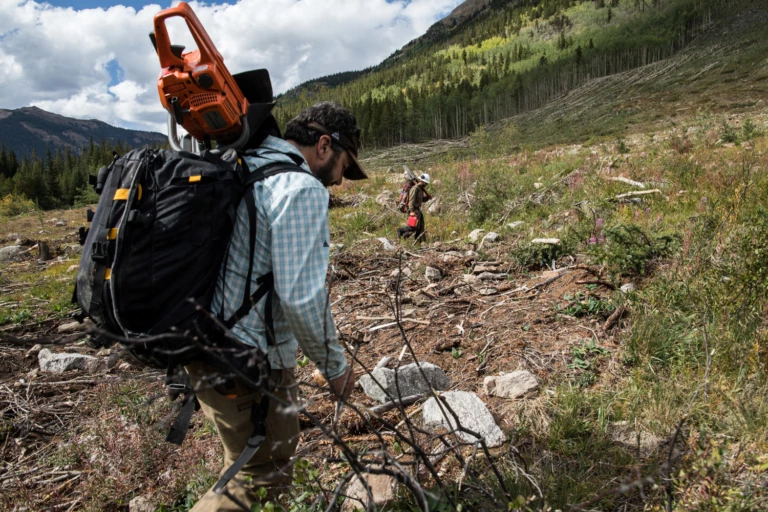
El Dr. Ethan Greene, director del Centro de Información de Avalanchas de Colorado (CAIC), en la intersección de los senderos de avalanchas de Star Mountain y Everett. Paso de la Independencia, Colorado. Foto: Forest Woodward
Greene and Elder shaped the study with collaborators from the US Geological Survey (USGS) and the USFS National Avalanche Center, gathering a dynamic crew with diverse educational backgrounds ranging from meteorology, ecology and dendrochronology to avalanche forecasting and ski patrolling. “It’s been a perfect opportunity for [us] all to work together because it’s such a big project,” says Elder. “No single entity or group could do it justice … we all have different expertise and it’s been a great collaboration to throw together minds.”
As winter finally eased its grip on the Colorado high country and early summer thaws revealed the extent of the damage, Greene rallied his staff of avalanche forecasters and volunteer students to begin collecting tree discs from trees torn out by the slides. Amid the debris, reality felt skewed. Thousands of mature aspen were doubled over on mountainsides like freshly stepped-on blades of grass. Spruce that once towered high above became trusswork that was precarious to navigate.
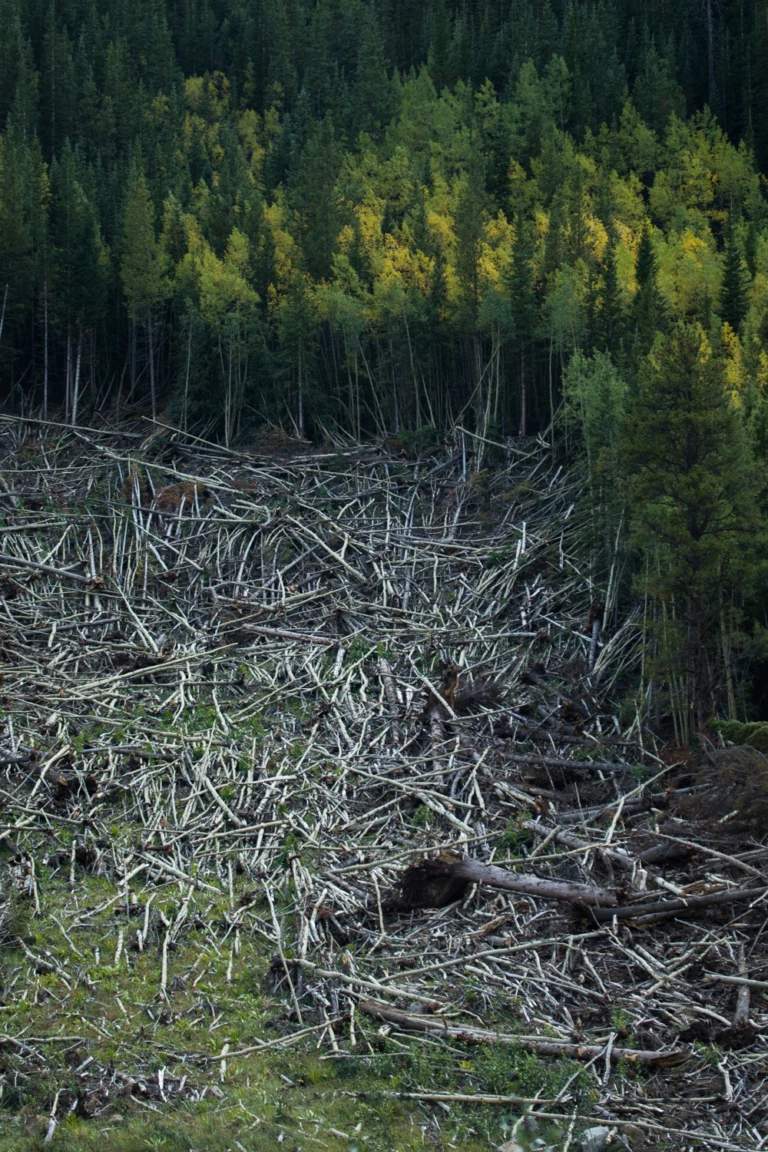
La biblioteca. Paso de la Independencia, Colorado. Foto: Forest Woodward
The task was simple, but the work grueling: carefully walk atop balance beams of downed trees with chainsaws in hand, find trees that remained close to where they were snapped from their roots, note length, width and location, chainsaw a disc from the trunk, repeat 40 times and haul the rounds out to the truck to be sent to labs in Colorado and Montana.
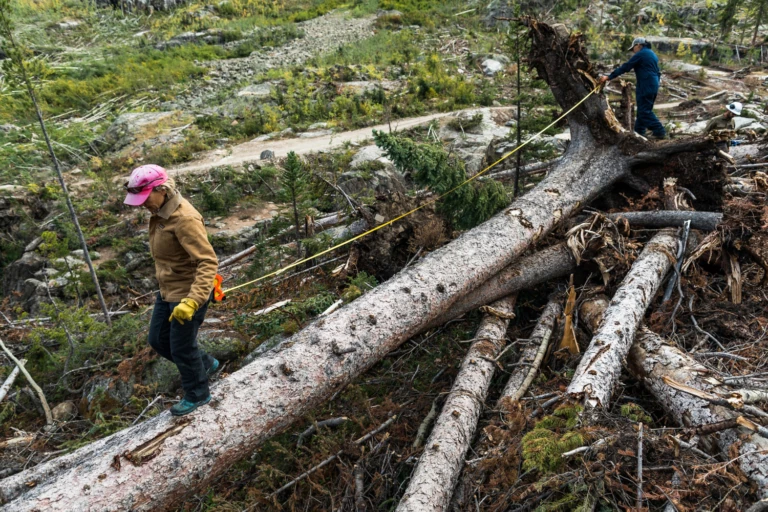
Becs Hodgetts y Rocky Schifani trabajan duro para reunir la mayor cantidad de datos posible antes de que vuelva la nieve. Paso de la Independencia, Colorado. Foto: Forest Woodward
Their goal is to finish field collection of tree samples by fall 2020 while simultaneously doing lab analysis. They hope to have preliminary results in the next year, but are still looking for funding outside of CAIC’s operational budget and a small amount of support from the USFS. “It’s miniscule to what it should be,” Elder says. He’s hoping that colleagues and students from around the globe will also pitch in on the project.
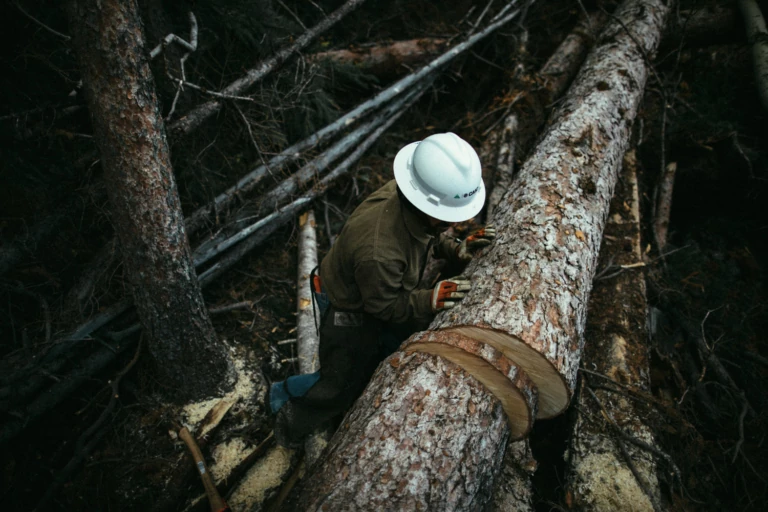
Altitud, pendientes pronunciadas y una celosía en el suelo, el trabajo demandó grandes pulmones, buen equilibrio y un gusto por el aroma de los álamos y los motores de dos tiempos. Paso de la Independencia, Colorado. Foto: Forest Woodward
“Funding avalanche research is not easy in the US,” explains Greene. Unlike Europe, where there are a lot of municipalities and infrastructure threatened by slides, US avalanche research is mainly used to safeguard highway systems and inform snow recreationists. However, the abundance and magnitude of avalanches in 2019 has since caught the attention of many public service providers in the mountains of Colorado where roads were impacted and power lines were taken out.
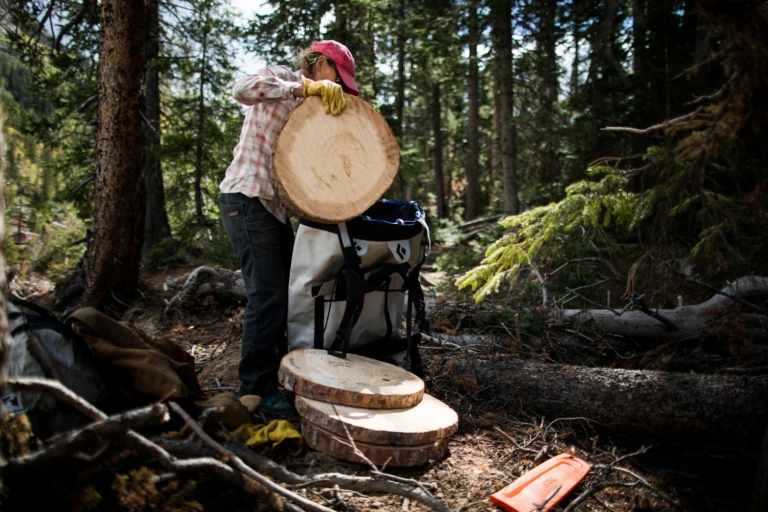
La mochila no siempre se hace más liviana en el camino de regreso. Estos discos serán analizados en los laboratorios de Colorado y Montana. Drenaje de Lincoln Creek, Colorado. Foto: Forest Woodward
If Greene and his team can effectively model these massive events and put them into context, it will be easier to predict more common future average events, which are of most concern for human safety. We can make sure new structures aren’t built in developing slide paths, and that everyone who lives in, travels to, or provides services to mountainous areas have the most accurate information. Scientists, modelers, forecasters, municipality planners, avalanche controllers, skiers and snowmobilers can all learn from this event and the resulting studies.
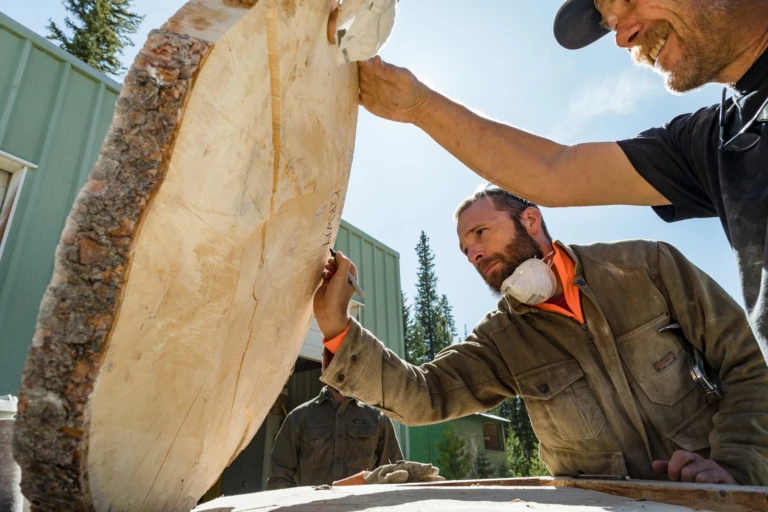
El estudio incluyó a colaboradores del Servicio Geológico de EE. UU. y del Centro Nacional de Avalanchas con experiencias que van desde meteorología, ecología y dendrocronología hasta pronóstico de avalanchas y patrullaje de esquí. Paso de la Independencia, Colorado. Foto: Forest Woodward
As to what caused the dramatic uptick in avalanches and their increased power, Greene and Elder are testing numerous hypotheses by looking at the return periods of specific avalanche paths. At first glance, it appears many of these slides had not occurred at this magnitude in at least 100 years. But for some paths it could have been 300 years or more. Researchers will not come to any major conclusions for another couple of years.
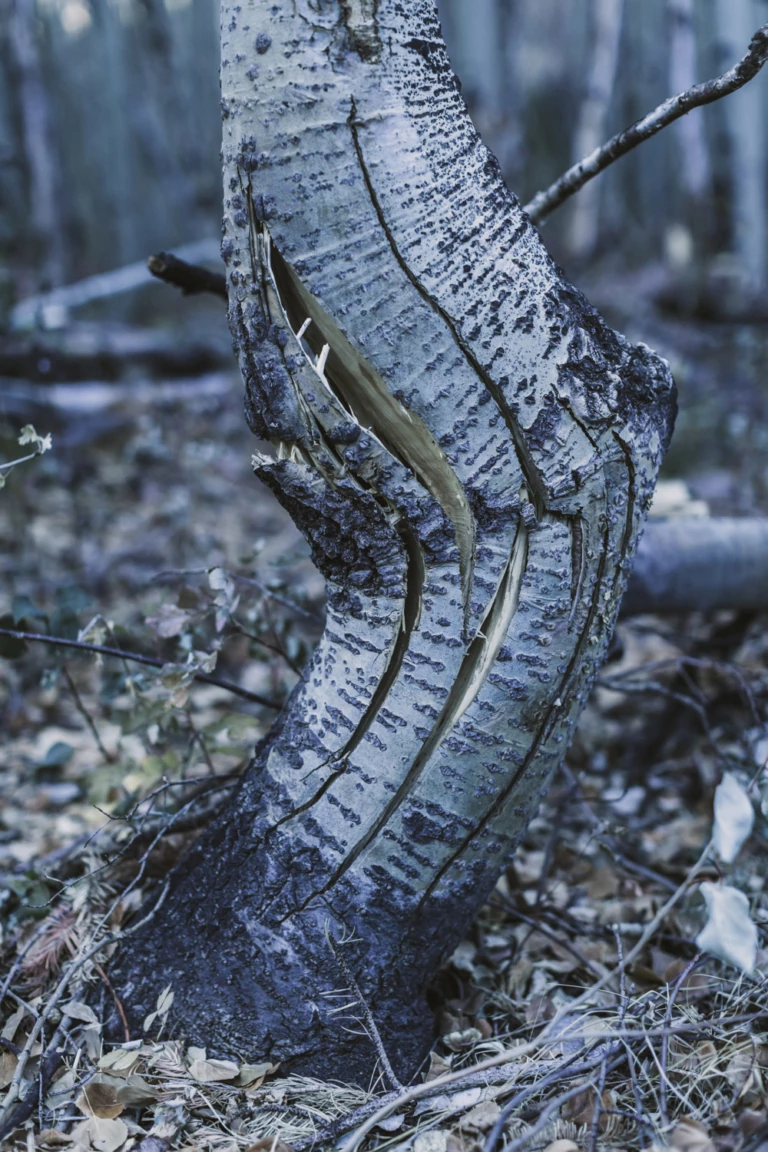
Si un árbol no es destruido por una avalancha, intentará curarse y estabilizarse formando un tejido cicatricial llamado “madera de reacción”, que aparece en un patrón o con un color de grano diferente. La madera de reacción ayuda a revelar siglos de información sobre la magnitud y frecuencia de las avalanchas, así como datos sobre el clima y el manto de nieve. Paso de la Independencia, Colorado. Foto: Forest Woodward
“I worry almost every day that we’re missing opportunities to help us understand it all better,” Greene says. “It’s neat to be able to do research that is really impactful—it is a special, wonderful opportunity to do what you love—but you end up working too much when you believe in what you do. It’s a blessing and a curse.”
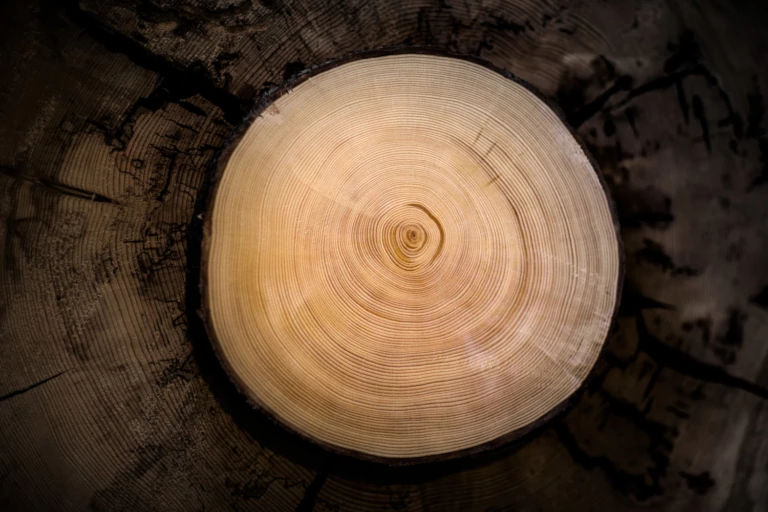
Tócalo al revés y escucharás un rugido, seguido por siglos de cantos de los pájaros, del viento y del silencio.
Foto: Forest Woodward
As this winter’s snow has begun to bury evidence from last year’s slides, Elder has returned to teaching avalanche courses, and Greene and his team have immersed themselves back into the daily work of forecasting. The tree rings still quietly hold, as they always have, a deeper understanding of a changing climate and shifting landscapes. “If nobody notices this or doesn’t learn anything from this, that’s a tragedy,” Elder says. “Nature doesn’t offer these lessons very often.”
